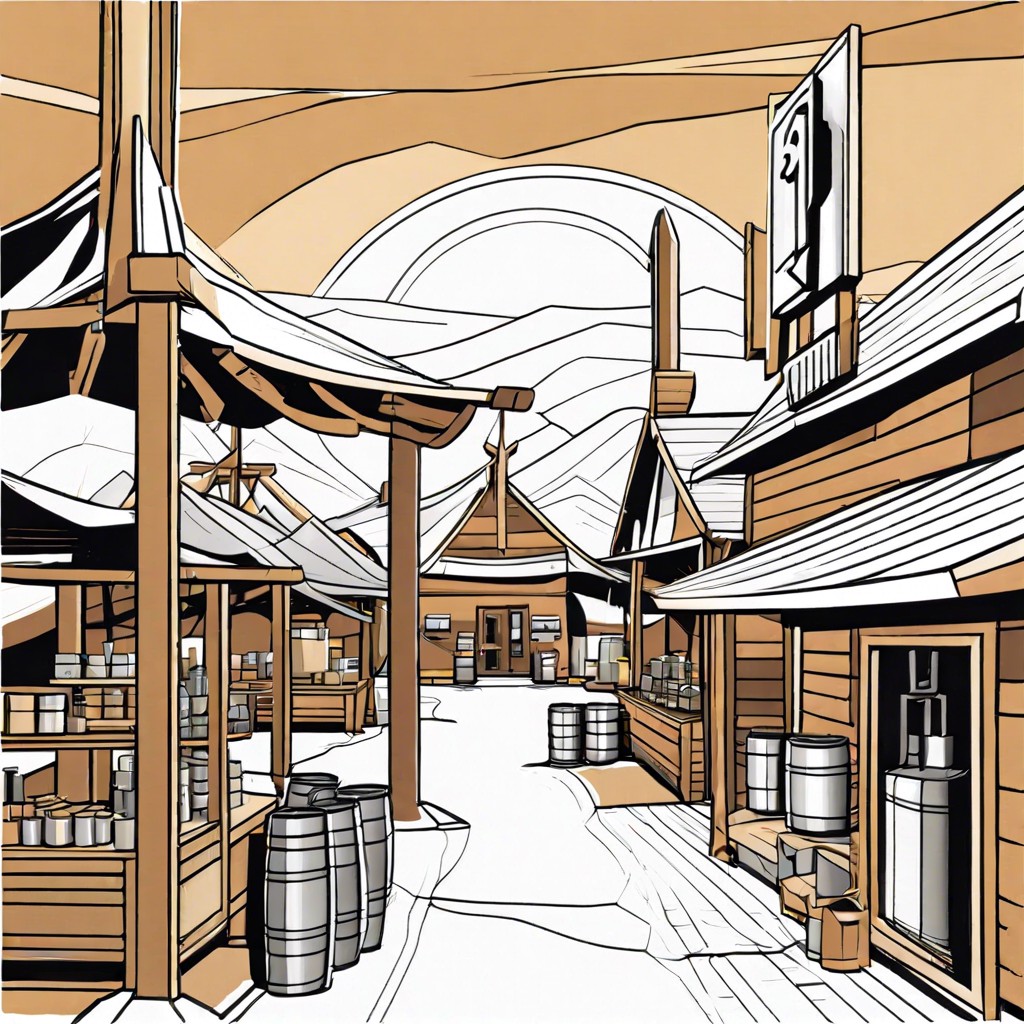A trading post is a hub where people gather to exchange goods, services, or financial instruments, and in this article, you’ll learn everything about its historical significance and modern applications.
Key takeaways:
- Trading posts were hubs for exchanging goods and services
- They fostered economic and cultural diversity
- Trading posts acted as banks and information centers
- Fur, spices, and precious metals were popular goods traded
- They played a pivotal role in shaping local economies and trade routes
Definition of a Trading Post

A place where people exchange goods and services, a trading post often stands at the crossroads of different cultures and economies. These spots were the original shopping malls, but with more fur and fewer food courts.
Initially, trading posts emerged in regions with plentiful natural resources, like fish in coastal areas or furs in the forests. They usually popped up near transportation routes, whether those were waterways, trails, or later, railways.
A few key features:
- Typically managed by a trader or trading company.
- Offered goods not easily obtainable locally.
- Sometimes doubled as community centers or hubs of social activity.
Picture it as the Amazon of its day, minus the drones and two-day shipping.
Historical Significance
Trading posts have always been the lifeblood of communities, enabling the exchange of goods and ideas. Picture bustling centers where trappers swapped furs for food and tools, or explorers traded spices for gold. These vibrant hubs not only fueled local economies but also wove together diverse cultures and traditions.
In the age of exploration, they served as crucial waypoints for navigators and adventurers. Think of them as the original pit stops, providing fresh supplies and rest for weary travelers. European empires, like the British and the French, used trading posts to establish and maintain colonial territories.
They weren’t just about commerce, though. Many trading posts sparked the spread of new technologies and agricultural practices, powering societal progress. Imagine learning about a new farming technique while trading your goods—double win!
They were also early melting pots, where different languages, ideas, and customs mingled and mixed. Traders, natives, settlers—everyone had a role to play, contributing to a rich tapestry of human activity. More than just places to swap goods, they were centers of social and economic dynamism.
Roles and Functions of a Trading Post
Back in the day, a trading post was like your neighborhood’s busiest intersection, minus the annoying traffic lights. It served as a central hub for the exchange of goods, especially in areas without established markets.
It was a melting pot of activity. People from different regions came together, bringing their unique goods to trade. Imagine a chaotic yet charming flea market where you could swap fur pelts for some shiny new farming tools.
These posts also acted as informal banks. Traders could store their goods temporarily, or even secure credit based on their stock. Talk about the original form of financial services!
Additionally, they were information centers. Traders shared news and stories, spreading information faster than a rumor in a small town. Long before newspapers, these places were buzzing with the latest updates.
Lastly, they fostered community-building. Regular visitors developed relationships, strengthening social bonds and fostering a sense of trust. Who knew exchanging beans for blankets could create such tight-knit communities?
Goods Traded
Pelts, spices, gold, oh my! Trading posts were bustling centers of commerce where a variety of goods exchanged hands. Forget Amazon Prime; this was the real prime time for traders.
Fur was a hot commodity, especially in colder regions. Fashionistas of the past were all about those beaver hats and mink stoles. Spices like cinnamon and pepper were worth their weight in gold, sometimes literally. These exotic treasures traveled vast distances and spiced up not just food, but also economies.
Speaking of sparkle, precious metals like gold and silver were favorites. Who doesn’t like a bit of bling? These metals served not just as currency but also as status symbols. Add in some textiles, tools, and the occasional livestock, and you had yourself a bustling marketplace that could make a flea market look like child’s play.
It’s like a historical Walmart, minus the annoying greeters and endless checkout lines!
Economic Impact
Trading posts played a pivotal role in shaping early local economies. These vibrant hubs facilitated the exchange of goods and services, often creating a ripple effect throughout the community.
First off, they served as a marketplace for local traders, enabling the circulation of currency and bartering of essential goods. This localized economy helped stabilize regions and support smaller settlements.
Secondly, trading posts acted as employment centers. They required a workforce to manage transactions, maintain inventory, and ensure security, which in turn created job opportunities.
Additionally, trading posts attracted diverse groups of people—merchants, trappers, artisans—boosting cultural exchange and fostering economic diversity.
Lastly, these trading centers were instrumental in the expansion of trade routes, paving the way for economic growth and exploration, effectively laying the foundation for the burgeoning trade networks we see today.
In summary, trading posts weren’t just about swapping pelts for pots; they were economic engines driving growth and development. And who knew bartering could be so…impactful?